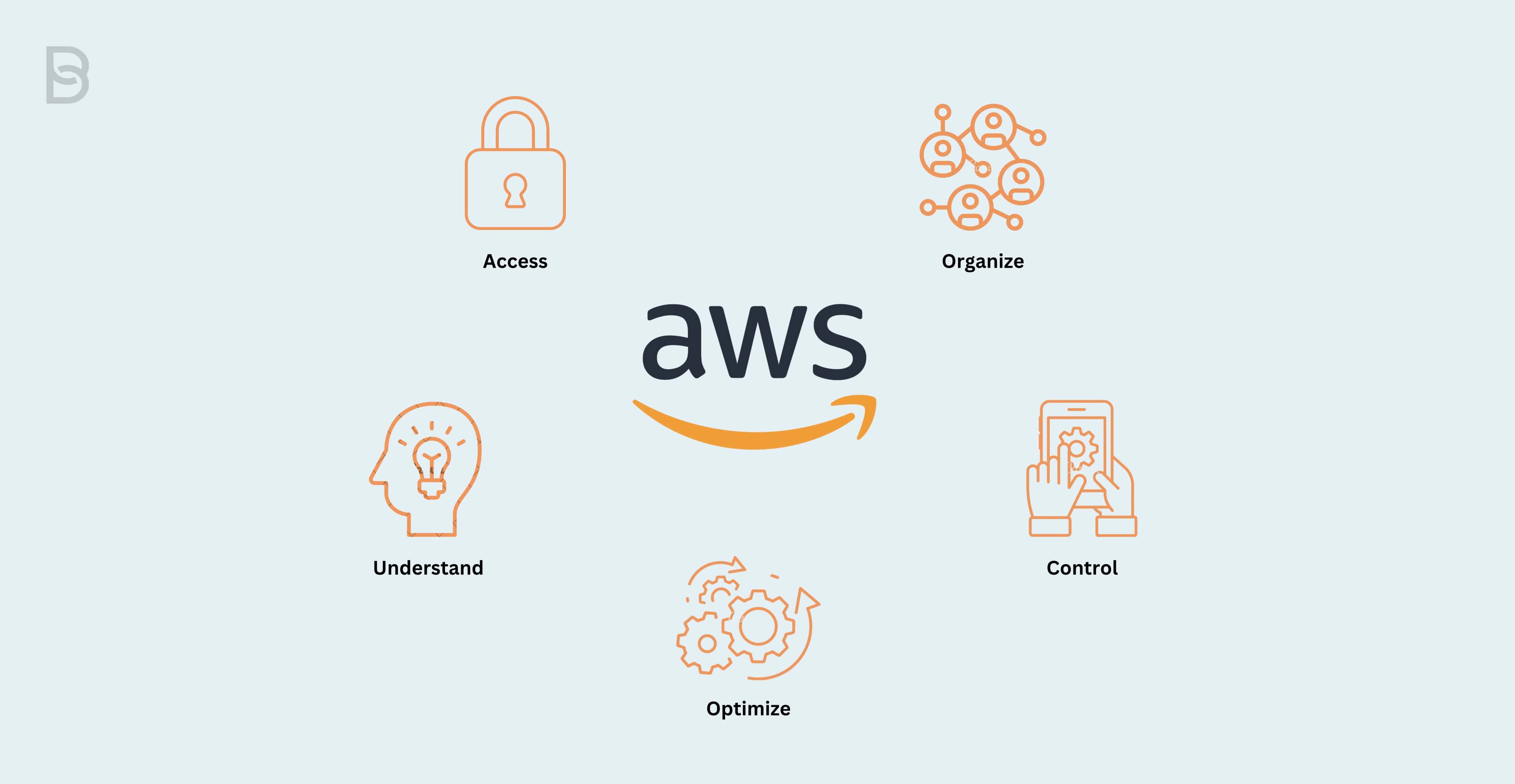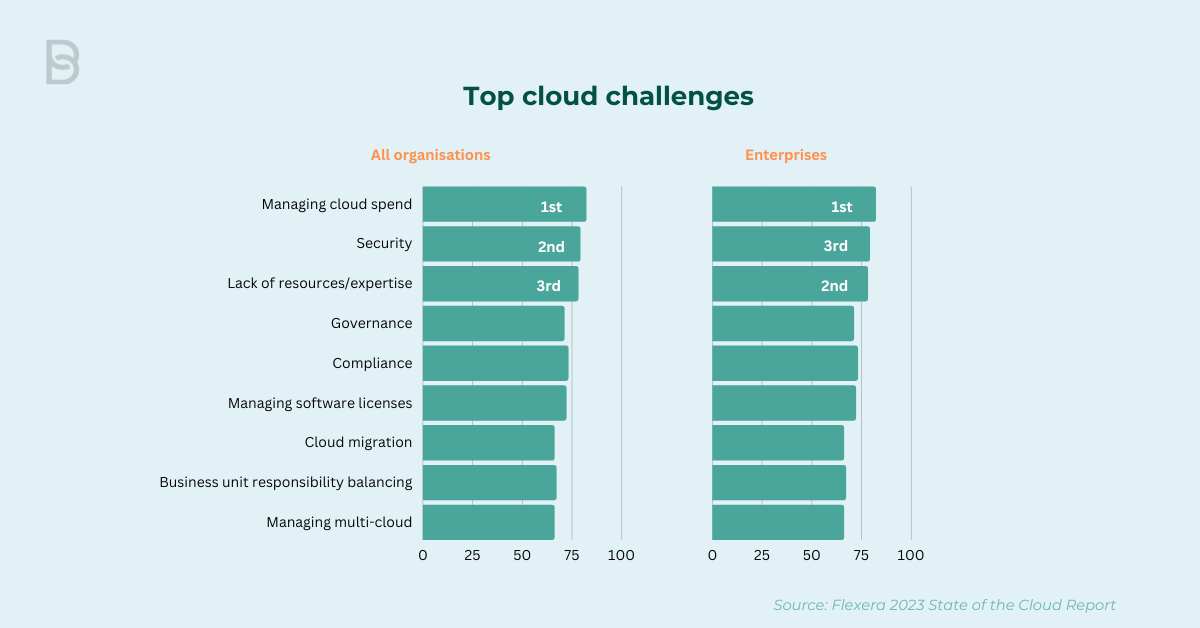
Contents
Ontvang de beste CloudBilling-content van de week
Are you tired of feeling like you're at a loss every time your monthly AWS bill arrives? Or have you ever felt confused by the complexities of your expenses on the AWS platform? If so, then you may have wondered whether there was a more efficient way to navigate the world of AWS billing and unlock potential savings for your business.
Luckily for you, this blog will provide you with 6 best ways to help you master AWS billing and cost optimisation. One of them is completely automated!
We will discuss the importance of cost optimization for businesses using AWS, its challenges, and how automation can help with your AWS cost insights and billing. Let’s dive into it!
Why is AWS Cost Optimisation important?
Let’s start with the question of why you should bother to optimize your AWS costs. The answer is quite simple: Failing to do so can lead to significant challenges and complications.
Imagine a situation in which you are using AWS to run your business, and you're not keeping a close eye on your costs. As a result, you're overspending on resources that you don't need, you're not taking advantage of opportunities for savings, and your bills are skyrocketing.
This is especially critical for companies since every cent saved on AWS costs can be reinvested in their core operations, in innovation, or simply in improving their bottom line.
So clearly, it is important to have the right cost optimization strategies in place. Not only you will be able to reduce expenses but also getting informed decisions that will most likely impact your business in the long term. But what makes this sometimes so difficult? Let’s take look at the challenges!

What are the Challenges in AWS Cost Optimisation?
According to the most recent Flexera State of Cloud report, 80% of companies spend over $1.2 million annually for cloud-related expenses, and a substantial 32% of these funds are going to waste. With economic uncertainties on the horizon, organizations are actively seeking methods to cut costs.
Difficulties often arise from the complexities that are inherent in the cloud computing environment and the complexities of cloud computing billing. The most important challenges include the following:
Unpredictable Cloud Costs: AWS expenses can be hard to predict, making it challenging to set budgets in advance.
Limited Cost Visibility: Many organizations lack a clear view of the costs they generate, leading to waste and inefficient resource usage.
Financial Knowledge and Billing Complexity: Development teams may not have comprehensive financial knowledge, which is aggravated by the complexity of invoicing and the evolution of pricing policies.
Manual Work Overload: Manually managing AWS costs can be time-consuming, prone to errors, and complex. Tasks such as tracking forgotten instances, writing and deploying scripts, and comparing AWS bills can overwhelm teams.

Understanding Your AWS Cloud Costs
To kickstart your journey towards efficient AWS cloud cost management, the first step is gaining a profound understanding of your expenses. This process involves more than just following the numbers on an invoice, it requires a comprehensive approach to understanding where your money is going and what value you are getting in return.
To truly evaluate the value your cloud investment brings to your business, focus on a concept known as the 'unit cost.' Think of this as the cost associated with achieving your core business metrics, whether it's acquiring new users, expanding your subscriber base, processing API calls, or generating page views.
Calculated by dividing your total AWS service costs by the number of these units, the unit cost is a key metric that reveals how efficiently you're achieving your business objectives.
You can also use the official AWS Price Calculator, a useful tool, to get a detailed estimate of your potential costs. Simply enter the details of the resources you plan to use, and the calculator will show you how much you could spend.
Why Understanding Unit Costs Matters:
-
Optimal Resource Allocation: By understanding unit costs, you gain clarity on how efficiently you're utilizing AWS resources to achieve your business goals. It empowers you to allocate resources effectively and direct your investments where they matter most.
-
Cost-Efficient Scaling: Lowering the unit cost signifies that you are scaling your business in a cost-effective manner. This enables you to pursue growth without incurring unnecessary financial burdens.
-
Budget Alignment: An awareness of unit costs allows you to ensure that your cloud spending remains in harmony with your budgetary constraints. It's a vital aspect of preventing unexpected budget overruns.
-
Data-Driven Decisions: Armed with unit cost data, your cost management strategies become data-driven. You can make informed decisions about resource optimization and scaling, ensuring that every dollar spent translates into tangible value.
6 strategies to optimise your AWS billing
Each of these 6 approaches offers a unique way to improve efficiency and reduce costs in your AWS environment. By understanding and implementing the following strategies, you will be able to align your AWS usage with your financial goals. So, let’s jump into them!
1. Implement Tags in Your Environment
AWS cost allocation tags are invaluable for maintaining cost transparency within your organization. By labelling your AWS resources with metadata, you can easily categorize and assign costs to different departments, teams, or projects. This practice not only increases accountability but also simplifies the process of understanding where your AWS budget is being spent.
|
Advantages |
Disadvantages |
|
|
2. Choose the right pricing model
AWS offers various pricing models for different services, helping you manage costs based on your workload's nature. Here's a breakdown of common pricing models used for AWS services:
2.1. On-Demand
On-Demand pricing offers flexibility, with rates applied per hour or in one-second increments, depending on the specific service (such as Amazon RDS or Linux EC2 instances). This pricing model is best suited to applications characterized by short-term workloads lasting a year or less, with occasional peaks in demand, unpredictability, or workloads that cannot be interrupted.
|
Advantages |
Disadvantages |
|
|
2.2. Amazon EC2 Spot Instances
EC2 Spot Instances are getting a great deal on unused computing power, with discounts of up to 90% compared to regular rates. These are perfect for applications that can handle sudden interruptions and adapt to changing needs, like testing and development projects.
Keep in mind that AWS can reclaim Spot Instances with only a two-minute warning when they need the capacity back. Spot Instances are best suited for non-critical workloads that can deal with the unpredictability of the spot instance availability. You can also mix and match Spot Instances with Reserved Instances and On-Demand Instances using EC2 Auto Scaling to make the most of your resources.
|
Advantages |
Disadvantages |
|
|
2.3. Commitment Discounts
Ideal for long-term projects and predictable workloads, commitment discounts come in various types:
-
Savings Plans: With Savings Plans, you commit to a certain hourly spend (measured in USD per hour) for one or three years, securing discounts across resources like Amazon EC2, AWS Lambda, or AWS Fargate.
-
Reserved Instances (RI): RIs provide you with capacity reservations for one or three years when purchased. They offer discounts of up to 72% for EC2 instances and are available for several other AWS services.
- Usage Discounts: Some services like Amazon CloudFront and AWS Elemental MediaConvert offer discounts when you make minimum usage commitments.
|
Advantages |
Disadvantages |
|
|
3. Rightsizing EC2 instances
Rightsizing EC2 instances means strategically adjusting their sizes to match workloads. It's not a simple one-to-one match, because instance capacity doubles when you increase a size and halves when you decrease it.
Rightsizing is most beneficial when instances reach a peak utilisation of around 45%. Evaluating utilisation metrics is vital for finding opportunities to optimise workloads, potentially moving them to different instance families beyond "General Purpose" for a better fit.
|
Advantages |
Disadvantages |
|
|
4. Time-Based Scheduling for Savings
Setting specific times for when non-production instances are active and inactive can save you a lot of money. For example, if you only have these instances running from 8am to 8pm on weekdays, you can reduce your costs by around 65%. However, you can save even more if your development teams have irregular schedules or work different hours.
You can be more efficient by analysing when these instances are most used and scheduling them accordingly. You can also use a schedule that keeps them switched off until you need to use them. However, be aware that even when these instances are switched off, you may still be charged for some of the associated components, such as storage.
|
Advantages |
Disadvantages |
|
|
5. Optimize your data transfer costs
Saving on data transfer costs is very important. When you transmit data from your AWS resources, such as EC2 or S3, to the public Internet, this can result in substantial expenses. To reduce these costs, consider the following strategies:
-
Use Amazon CloudFront: It stores web data worldwide, making data transfer cheaper.
-
Remember that data transfers within the same region are usually free. But transferring between different regions can be expensive.
-
When communicating within the same area (Availability Zone), use private IP addresses to avoid charges
|
Advantages |
Disadvantages |
|
|
6. Exploring External AWS Cost Management Solutions
The ideal approach for businesses is to achieve efficient AWS cost management with minimal human intervention. While AWS provides a variety of native tools and services for cost management, many businesses choose to complement their efforts with third-party solutions.
These solutions not only enhance cost management within the AWS ecosystem but also contribute to overall cost-effective cloud operations by offering support across multiple public clouds and hybrid workloads.
External AWS cost management tools are designed to offer additional features, seamless integrations, and automation options tailored to meet specific business needs and preferences.
|
Advantages |
Disadvantages |
|
|
Automate your AWS billing solutions with CloudBilling
Optimising AWS costs is an ongoing effort that requires close monitoring of your AWS Cloud infrastructure. The most reliable and fastest way to manage your AWS costs while maintaining billing transparency then it is undeniably through automation. A good example of such a solution is CloudBilling.
At CloudBilling, we understand the perspective of MSPs who manage AWS environments for their clients. Your customers rely on you to provide information on AWS expenses and offer cost optimisation services. CloudBilling is the perfect tool to help MSPs simplify their operations and offer exceptional value to their clients.
Here's why Cloudbilling is a game-changer for businesses:
-
Seamless integration: CloudBilling integrates seamlessly with your existing software and applications, making the transition to an automated invoicing and cost management process smooth and hassle-free.
-
Multi-Cloud support: Our solution goes beyond AWS, offering multi-cloud support. You can manage costs in several public clouds from a single interface.
-
Advanced billing insights: CloudBilling provides advanced billing information, helping you to identify optimisation opportunities and maintain cost-effectiveness.
-
Customised solutions: Adapt your billing and cost management approach with CloudBilling's customisable features, ensuring that it aligns perfectly with your business needs and preferences.
With CloudBilling, you can focus on growing your business while knowing that your cloud expenses are controlled and optimized. Our solution effortlessly streamlines the management of maintenance tasks for businesses. Thanks to our user-friendly software, your team can enhance efficiency, resulting in significant time and cost savings.
We hope that you have a clearer picture of the various ways you can optimize your AWS billing and cost management.
If you would like to try our solution, please do not hesitate to contact us or plan a free demo below. CloudBilling can be your trusted partner in real-time AWS cost management optimization.








